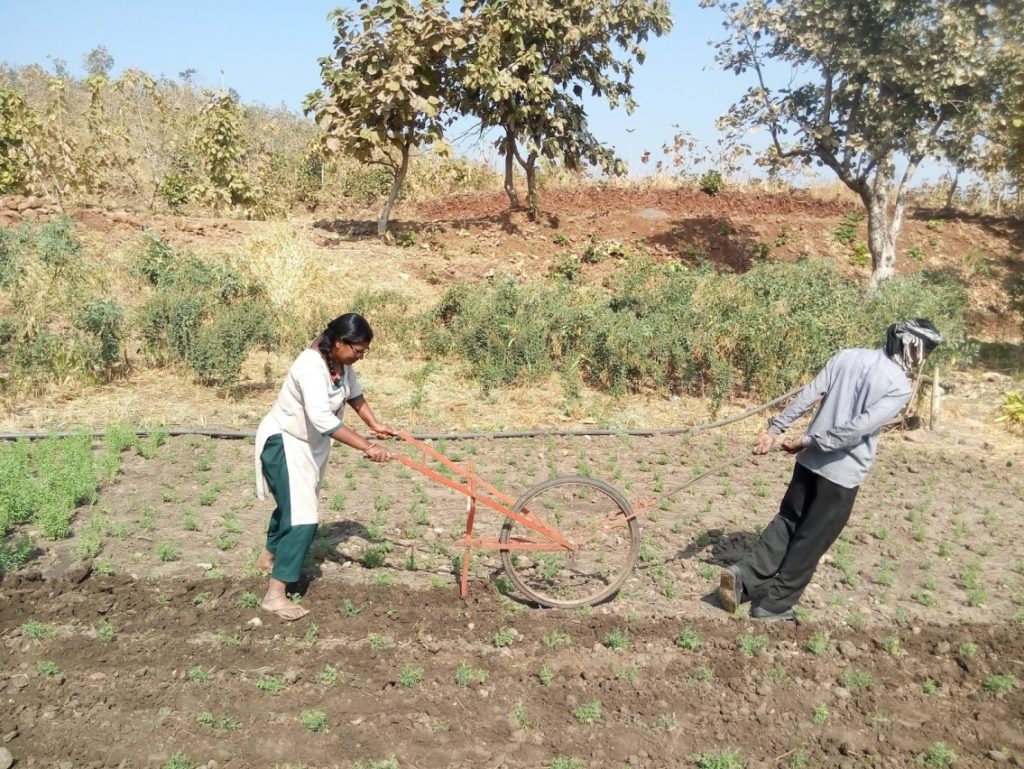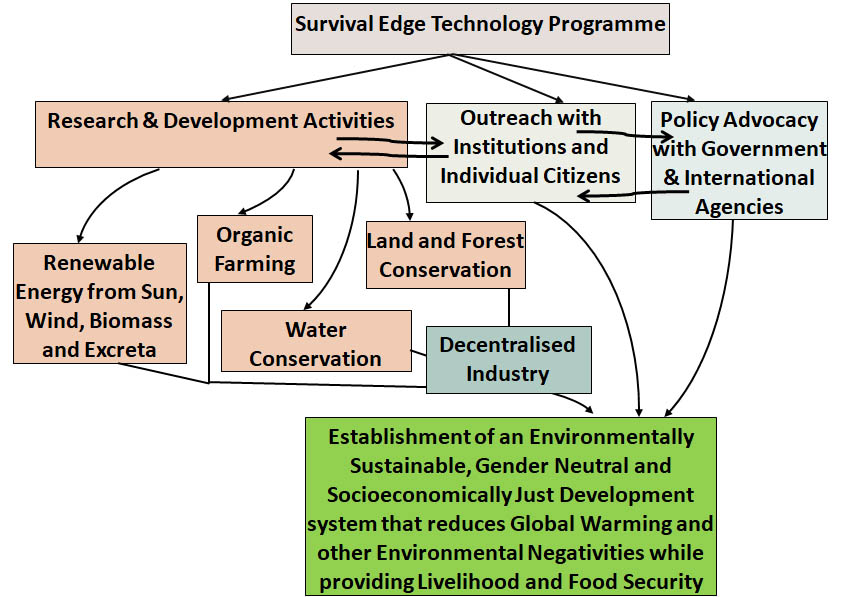
The farm of the organisation in Pandutalab village in Dewas district has a limited supply of water. So the organisation has customised the Rabi sowing to suit this lesser water availability. Not only have the seeds of wheat, linseed, masoor and gram been sown at one feet distance from each other, watering is also being done through a small pipe only at the roots of the plants in limited quantities. This has resulted in more tillering in the case of wheat and more robust growth in the case of the other crops. Since the plants are at a distance from each other, there is space for a bicycle hoe to be driven between them for turning the soil and killing the weeds as shown in the picture below. In the background are perennial redgram plants around the borewell which are also minimally watered so as to ensure that they produce redgram throughout the year for use as vegetables.
This was followed by weeding around the plants and then a special organic fertiliser in the form of a bio-enzyme rich culture called Jeevamrit Ghol was applied. This fertiliser is prepared by fermenting a combination of cow dung, cow urine, gram flour and jaggery to make it rich in bio-enzymes and then diluting it and applying it to the roots of the plants. In addition there is a pit in which the biomass from the farm is mixed in the proportion of 9:1 with dung and composted.
A campaign for the revival of the traditional seeds of the Adivasis is being conducted and millets, sorghum, maize, pulses, oilseeds, fibres and vegetables native to the region have been cultivated and propagated with success not only in the region but also across India.
These processes require more labour but they produce more wholesome food with a lesser amount of water. Unfortunately there is no support from the Government for this kind of agriculture and so farmers in general are not prepared to adopt it. The organisation is implementing this as a pilot to promote sustainable agriculture and tackle the serious problems of water scarcity, malnourishment, illness due to pesticide and chemical fertiliser infested crops, soil, water and air and the looming crisis of climate change.


The comprehensive programme is called Survival Edge Technology, which is an assortment of simple technologies that can be implemented by communities through collective action to mitigate the agriculture, water, energy and climate crises that face humanity. The adverse effects of the above mentioned crises are felt most by women due to the patriarchal nature of society. Therefore, an important aspect of Survival Edge Technology is the agency of women in its planning and implementation as communitarian cooperation alone is not enough. The schematic diagram for this programme of climate change mitigation being implemented in Pandutalab is shown along side.
